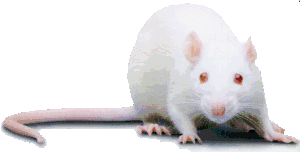Behavioral control / Startle
Prof. Dr. Peter Pilz
| We ask how basal learning and filtering mechanisms influence defensive behavior. The focus is on the auditory startle response, which is modulated e.g. by habituation or prepulse-inhibition. For the latter we have shown that it is, at least in mice, also a learned paradigm. Current interests focus e.g. on the aforementioned filter mechanisms (habituation, prepulse inhibition), because they are of clinical interest (e.g. defective in schizophrenia). We conduct basic research mainly in different strains of genetically defined mice, or on mice with genetically engineered single changes in their genome. |  |
One reason why we focus on auditory startle is the simplicity of its well known neural circuitry. The primary auditory startle pathway has only three central synapses (in the Cochlear Nucleus complex, in the Pontine Reticular Formation, and in the brainstem or spinal cord on motoneurons). This explains why startle has the shortest behavioral latency known (and the second shortest latencies of all responses). The behavior itself can reliably be elicited and measured. It is a graded behavior, the response amplitude (measured in Newton) increases e.g. with increasing stimulus intensity, and decreases with habituation, i.e. stimulus repetition, which is the most simple form of learning (non-associative learning). | |
Cooperations
- Dr. Markus Fendt, University Magdeburg
- PD Dr. Andrea Schmitt, University Goettingen
- Prof. Dr. Susanne Schmid, University of Western Ontario, Canada
- Prof. P. Ruth, University Tuebingen
- Prof. Dr. Marlies Knipper, Tuebingen Hearing Research Center
- Prof. Dr. Jutta Engel, Universityof Saarland
- PD Dr. Bernhard Gaese, University Frankfurt
